What is Hip Hinge? Why It's so Important
In physiology, the term “hip hinge” refers to a specific movement pattern involving an individual bending the torso forwards as they keep their spine in a neutral position, with the main driving force of the movement coming from the hips - hence the name.
The hip hinge is utilized in a number of highly important weightlifting exercises, as well as in day-to-day activities.
While the hip hinge mechanic may not seem all that important, it is absolutely vital for performing exercises like the deadlift and barbell row safely. Failing to properly master the hip hinge (or being unable to do it) can easily lead to injuries of the spine and hips, even if you aren’t necessarily a weightlifter.
The Hip Hinge Mechanic Explained
The hip hinge is relatively simple in its execution, with the performer simply needing to straighten their knees and flex their core muscles as they tilt the pelvis forwards, allowing the torso to swing downwards while the hips move backwards, as if with a lever.

While there is indeed an exercise that shares the same name and technique as the hip hinge, the mechanic that is the hip hinge is simply a movement pattern that acts as a portion of a larger act - be it performing a deadlift, entering the standard golfer stance or lifting an object from the ground.
As fundamental as the hip hinge mechanic is, issues like poor hamstring mobility or muscular weakness can make it difficult for some individuals to perform.
If the following use cases apply to you, then it is important to master the hip hinge before continuing to participate in said activities.
Usage in Weightlifting Exercises
While the hip hinge is most iconic in its inclusion in the deadlift exercise, less common weightlifting exercises like the barbell row, good mornings, reverse flies and certain squat variations all make use of the hip hinge as well.
If the hip hinge is not executed correctly, the risk of spinal injury increases significantly - and as such it is especially important for weightlifters to master the hip hinge pattern.
Usage in Sports
While somewhat more dynamic, quite a number of sports also involve the hip hinge in their movement patterns.
In particular, powerlifters, golfers and strongman competitors will likely be performing the hinge movement pattern repeatedly as they engage in their chosen sport.
Usage as a Rehabilitation Tool
Depending on the specific nature of the issue and the patient themselves, the hip hinge as a movement can also be used to help strengthen and stretch out the posterior chain, as well as aid in reinforcing general pelvic-lower back mechanics.
Helps Avoid Back Pain
Individuals who regularly lift heavy loads from the floor with a curved back can easily damage the spine and other nearby bodily components.
Even if you are not a weightlifter, athlete or physical rehabilitation patient - learning to master the hip hinge is vital for avoiding back pain later in life.
How to Execute a Hip Hinge Safely
Although the hip hinge is relatively simple in execution, there are a few key cues that can aid in keeping the performer safe.
Ensure the Core is Contracted
The entire movement pattern of the hip hinge is based on the assumption that the lower back remains in a neutral position throughout the entire action. This, of course, requires that the performer contract their core musculature (i.e. the abs and obliques) so as to ensure that the lower back is rigid and controlled.
If you are unfamiliar with the act of consciously contracting your core, try holding one hand across the front of your belly and squeeze your “stomach” as you push it outwards. The belly should become noticeably rigid beneath the visceral fat.
This action is known as “core engagement” or “tightening the core”, and is vital for protecting the abdomen and spine.
C-Spine and Neck Positioning
While the thoracic and lumbar sections of the spine do indeed remain straight throughout a hip hinge - there is rarely mention of the upper or cervical section of the spine.
Because the body acts as a kinetic chain, having one section displaced or in a less advantageous position can cause other parts of the body to follow suit. This is all the more true with the spine, of which is quite literally a single unit.
In order to ensure that the spine is protected during any movement involving a hip hinge, the head and neck should also be summarily in-line with the back, with as minimal tucking of the chin, turning of the head or craning of the neck as possible.
For an easier time, many coaches advise focusing the eyes on an object several feet away. This will help prevent the performer from subconsciously turning their neck as they perform the movement.
Foot Positioning and Tracking Angle
While the position of the feet and the angle they are pointing is not immediately important for executing the hip hinge, setting them the correct distance apart can help loosen the hamstrings and engage the muscles of the posterior chain when needed.
Unless otherwise specified by the activity you are participating in, it is best to set the feet shoulder-width apart, with the toes pointing forwards or slightly outwards.
Can the Knees Bend During a Hip Hinge?
Yes - allowing the legs to relax and preventing the knees from locking out will help the posterior chain muscles contract to their fullest extent, as well as help reduce pressure placed on the hips and knees.
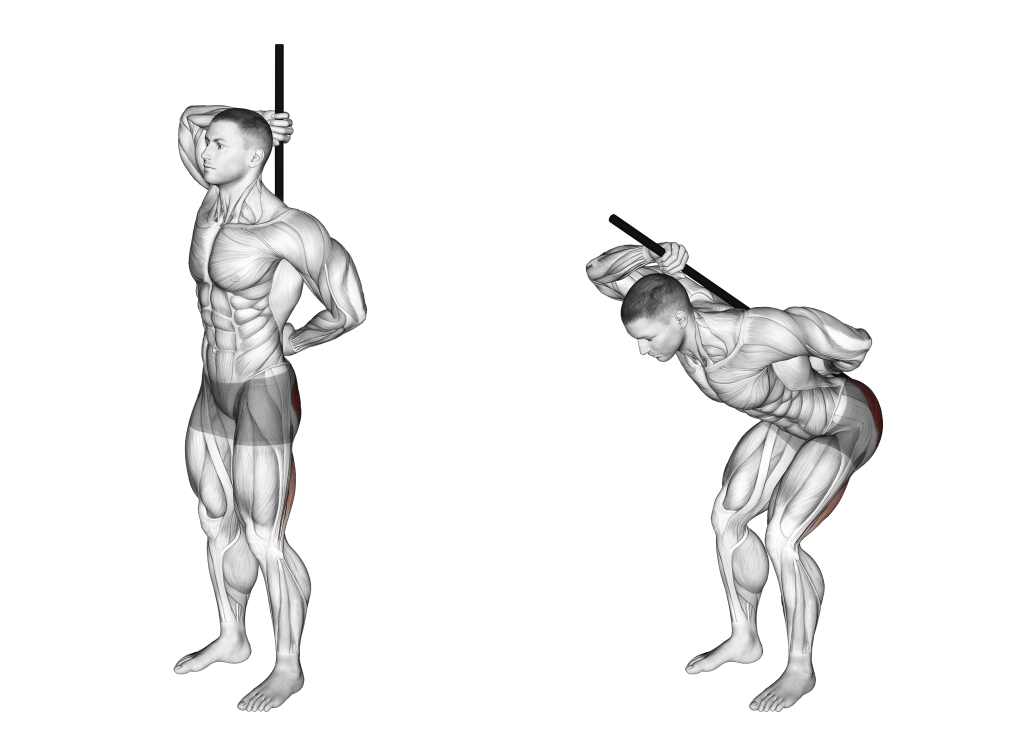
Muscles Involved in Hip Hinging
Although the hip hinge movement is often only a portion of a larger scale action, the movement pattern itself requires the usage of a few key muscles located in the lower body.
Weakness, instability or a lack of mobility in these muscles can easily lead to poor hip hinging technique.
Hip Extensors
While the muscles of the glutes and hamstrings are considered to be part of the hip extensor group, other muscles like the adductor magnus are also included and as such necessitate the separate mentioning of the hip extensors.
The hip extensors allow for stabilization of the femur in relation to the pelvis, work in tandem with the flexors for tilting of the pelvis, and are used during the latter portion of the hip hinge mechanic where the pelvis is being pushed forward.
Gluteal Muscles
During the hip hinge movement pattern, the glutes are responsible for extension of the hips and stabilization of the pelvis - meaning that they are used during the latter half of the hip hinge where the hips are being pushed forward and the torso is rising back up.
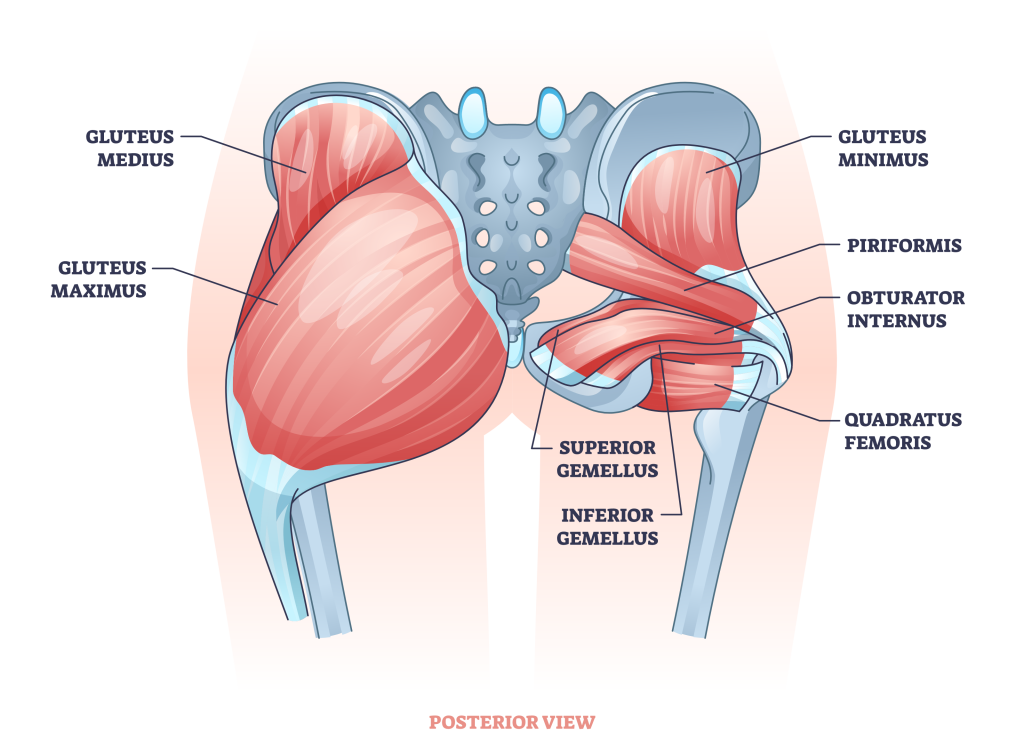
Hamstrings
The hamstrings play a similar role to the glutes in that they extend the hips forward. Furthermore, they allow the knees to bend. This means that the hamstrings are utilized throughout the entire hip hinge movement pattern to varying extents.
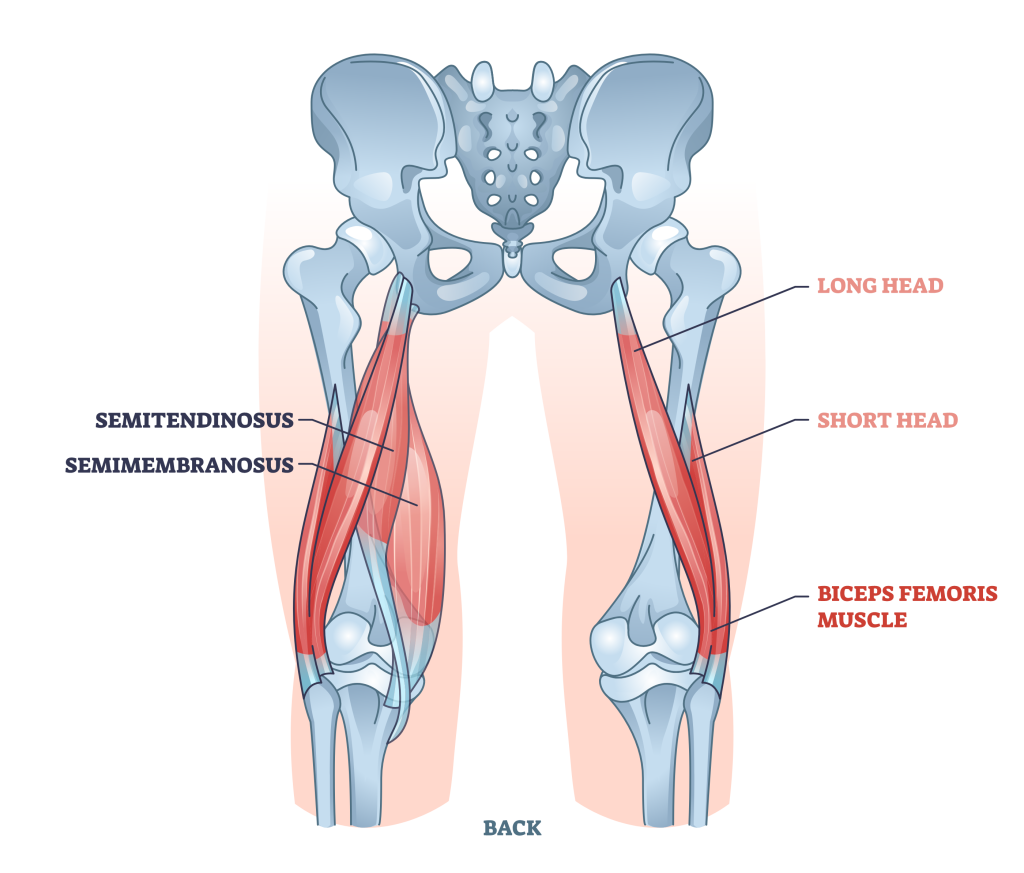
Erector Spinae, Obliques, Abdominals and Other Core Muscles
The erector spinae and other core muscles are isometrically contracted so as to keep the body stable and rigid throughout the movement.
In particular, the abdominal muscles and erector spinae work to keep the spine protected, and ensure that the body is not disbalanced as the torso shifts forward - of which would otherwise lead to the center of the body’s gravity unbalancing it.
Most Common Hip Hinge Weightlifting Exercises
Though the hip hinge movement is quite common outside of the gym, it is most crucial when performing free weight exercises as it directly dictates the safety of the entire exercise.
The following are the most common exercises involving the hip hinge in their movement pattern.
Barbell Deadlifts
The deadlift is perhaps the most iconic example of a hip hinge exercise, as the entire movement revolves around hinging the hips as a barbell is held in the weightlifter’s hands.
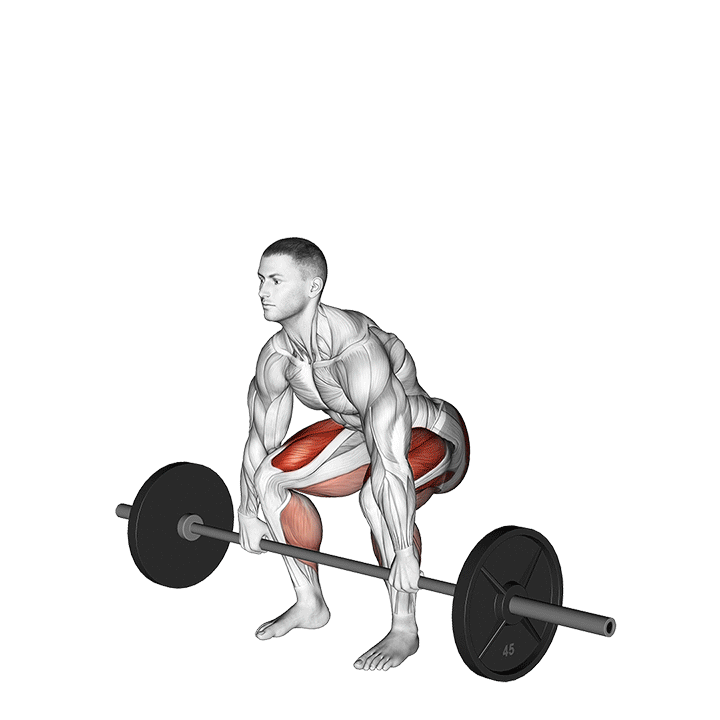
The deadlift allows for much the same muscles used in a hip hinge to be targeted with a high amount of weight, and should otherwise not be performed if the lifter cannot properly execute a hip hinge.
Kettlebell Swings
Kettlebell swings involve an explosive hip hinge so as to generate momentum that translates into the upper body.
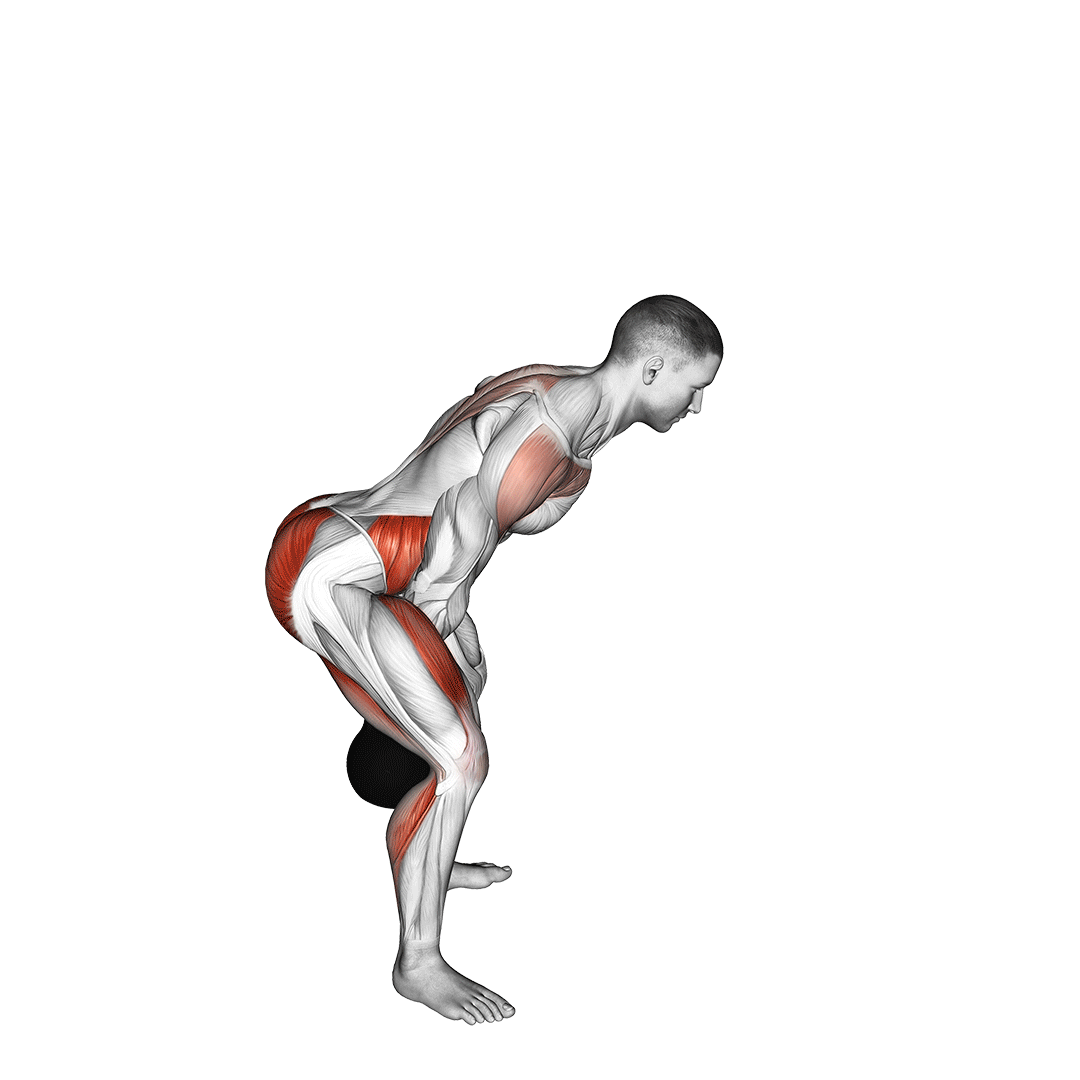
Unlike other exercises that feature the hip hinge in their movement pattern, kettlebell swings will often involve significant knee flexion so as to further increase the explosiveness of the exercise. They train the glutes and hamstrings alongside other unrelated muscles like the deltoids and quadriceps.
Good Mornings
In terms of movement pattern, good mornings are quite literally just a weighted hip hinge. They are used for reinforcing much the same muscles and mechanics as the hip hinge movement itself, and are generally performed in tandem with other hinge exercises for a more effective workout.

Back Squats and Other Squat Variations
Although only partial, the conventional back squat and many similar exercises will also feature a hip hinge movement, as the lifter is instructed to lower themselves as if they are sitting down.
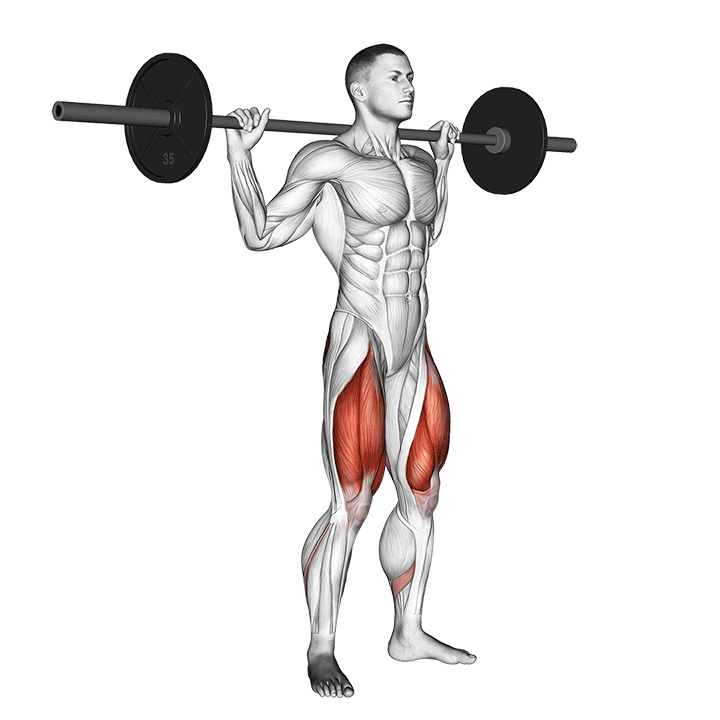
Of course, this is also accompanied with knee flexion and a far lesser degree of bend at the torso, making it only a partial hinge at most.
Common Mistakes Made When Doing Hip Hinge Exercises
In order to properly execute a hip hinge, it is important to avoid the following common mistakes, as they can potentially lead to injury or a loss of balance.
Snapping the Hips Forward
Although pushing the hips forward is needed to exit the hip hinge stance, doing so in too rapid a fashion without proper control can easily lead to injury of the hip extensor muscles - and even more complicated issues, like sciatica.
Leading with the Torso
The hip hinge revolves around movement of the hips, rather than the torso. This means that rising out of a hip hinge with the torso or lower back before the pelvis can lead to strain and injury, and it is best to either push the hips forward first or to do both actions simultaneously.
Leading with the Knees
Although the knees should be bent for the most optimal movement pattern, extending with the knees so as to produce momentum towards the pelvis can potentially stress the joints more than is necessary.
Collapsing the Shoulders and Chest
During the hip hinge, the torso must remain straight and rigid so as to avoid bending the spine in a potentially injurious manner.
This is also true for the upper portion of the torso, where any rounding of the shoulders or collapsing of the chest can cause the upper section of the spine to round - thereby also altering the curvature of the lower back as well.
During any movement involving a hip hinge, it is best to keep the shoulders in a neutral rotation and to push the chest outwards so as to protect the back better.
Neglecting Hamstring, Glute and Lower Back Mobility
Performing a hip hinge requires some level of posterior chain mobility, as it will stretch the tissues as they contract isometrically. This can be difficult for sedentary or older individuals, as the effects of lifestyle and age tend to affect the mobility of these areas the most.
Prior to attempting an action that includes the hip hinge in its movement pattern, it is important to first perform stretches of the hamstrings, lower back and glutes.
A good example of a stretch that fits this bill is the posterior chain PNF stretch, as it targets all of these areas in a single efficient movement.
Weak Core and Erector Spinae
Apart from requiring decent posterior chain mobility, performing the hip hinge correctly also requires strong core musculature and a stable erector spinae.
Like the mobility of the posterior chain, these areas tend to grow weaker and less responsive from a sedentary lifestyle, or from the degenerative effects of aging.
If you regularly participate in activities that involve the hip hinge - or even if you don’t - it is a good idea to regularly perform core exercises and low-impact resistance training that also targets the erector spinae.
Exercises like planks, back extensions and hanging leg raises are perfect for such purposes.
Frequently Asked Questions (FAQ)
What is the Hip Hinge Exercise?
The hip hinge exercise is simply a hip hinge movement performed for the purposes of training the posterior chain and mastering the movement pattern itself. It is occasionally used as a rehabilitation tool as well, and can be a solid inclusion into a low-impact bodyweight workout.
Why is it Important to Hip Hinge?
Hip hinging during exercise or day-to-day activity can help protect the spine and ensure that a natural movement pattern is being followed, reducing the risk of injury and any strain that may be placed on the joints of the body.
What is an Example of a Hinge Exercise?
A few good hinge exercise examples are; the deadlift, back squat, good morning and the kettlebell swing.
Final Thoughts
The hip hinge is fundamental to any individual’s bodily kinetics, and should be employed when needed as much as possible.
If you are unfamiliar with how to perform it or do not have the mobility and strength to do so, it is best to practice prior to participating in an activity that actually requires it.
Of course, it is also important to seek out the advice of a physician if you have a history of injury or other conditions that may make performing a hip hinge dangerous.
References
1. Michaud F, Pérez Soto M, Lugrís U, Cuadrado J. Lower Back Injury Prevention and Sensitization of Hip Hinge with Neutral Spine Using Wearable Sensors during Lifting Exercises. Sensors (Basel). 2021 Aug 14;21(16):5487. doi: 10.3390/s21165487. PMID: 34450929; PMCID: PMC8402067.
2. McGill S. (2006) “Ultimate Back Fitness and Performance” (3rd ed). Ontario, Canada: Backfitpro Inc, 2006. pp. 191-193.
